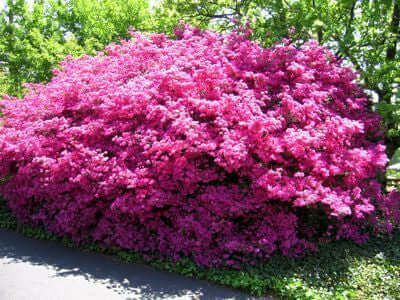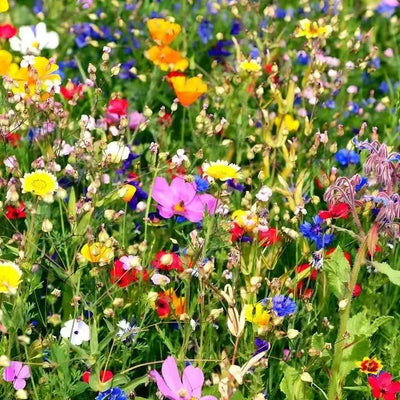Azaleas are the crown jewels of any garden, their delicate blossoms drawing attention and admiration. When it comes to making these beauties bloom abundantly, it's all about giving them the right balance of care and the conditions they love. With attention, you can turn your azaleas into a dazzling display that brightens your garden for weeks.
Proper Planting and Pruning for Abundant Blooms
To get your azaleas to bloom their best, plant them in the right spot. Azaleas thrive in well-drained, slightly acidic soil rich in organic matter. If your soil needs some help, mix in compost or pine bark to improve it. These plants love a spot with morning sun and afternoon shade, giving them enough light to encourage blooming without stressing the plant.
Pruning plays a critical role in flower production. Prune your azaleas right after flowering to keep them healthy and bloom profusely. This timing prevents you from accidentally cutting off the next season's buds. Focus on removing dead or overcrowded branches and shaping the plant for better air circulation. A little snip here and there will encourage new growth and prepare the plant for a fuller bloom next time.
Feeding and Watering for Azaleas Flower Power
Azaleas are hungry for nutrients when it comes time to bloom. Look for a slow-release fertilizer or one that dissolves easily in water, giving your azaleas the steady nourishment they need to develop solid and plentiful buds.
Water is another essential piece of the puzzle. While azaleas don't like soggy roots, they appreciate consistent moisture, especially during dry spells. Mulching around the base with pine straw or bark helps retain moisture and keeps the roots cool during the hot months. Make sure not to pile the mulch too high against the trunk, as it can lead to rot.
By providing your azaleas with the right amounts of sunlight, well-drained soil, regular pruning, and appropriate feeding, you'll be rewarded with vibrant blooms. There's something truly enchanting about witnessing these radiant flowers emerge in a stunning display of color, transforming your garden into a serene and picturesque haven that invites everyone to pause and admire its beauty.
Azaleas Has Been Used In Landscape For 200 Years
Azalea plants are among the most colorful and popular ornamental shrubs that lend a striking beauty to one's landscape. Part of the genus Rhododendron, these spring bloomers have been around since the 1830s and have developed into some 10,000 different cultivars.
The flowers are most notably native growers to North America, Europe, and Asia and hold sentimental value to numerous regions worldwide. For example, the azalea plant has long been a symbol for Sao Paulo, Brazil. The azalea is Georgia's state wildflower, and the plant is celebrated across the United States in many festivals.
Although the azalea and Rhododendron are considered sisters, both plants display distinctions in their flower appeal. You will generally find azalea blooms as funnel-shaped and with five stamens. The rhodo features bell-shaped flowers with ten or more stamens.
The intensity of an azalea plant bloom can turn many heads because the color variety offers something for everyone. There are white, pink, purple, mauve, salmon, and all red, orange, and yellow variations.
Like all plants, the azalea has growing preferences, but according to the Azalea Society of America, these beauties can handle various conditions. Experts suggest that most azaleas are hardy to planting in zones 6-9, with a few varieties able to survive the colder temperatures up to zone 4.
Most azalea types welcome the partial sun or filtered shade under tall trees. Too much sun can burn the leaves, and not enough rays can restrict blooming.
When it comes to soil, forget clay or alkaline because azaleas don't care for these extremes. Instead, plant azaleas in loam contain both small and large particles for better drainage and oxygen absorption.
Shallow roots mean that azaleas need moist, well-drained soil. Their foliage also allows for water absorption, so it's suggested you wet both the leaves and root zone when you water. Ample water is a good thing for maintaining azaleas.
Mulch is beneficial in keeping your azalea healthy, and about three inches in thickness placed as a ring around the plant is best. The U.S. National Arboretum advises using shredded leaves, leaf mold, pine needles, or pine bark mulch for excellent results. Please stay away from shredded hardwood, as it can create a high pH soil level.
If you're looking to enhance your property with a solid and stunning shrub, consider the azalea plant.
Building the Perfect Azalea Garden Bed
Gardeners who want to add color and elegance to their landscapes often choose azaleas because of their dazzling, vibrant blooms. Proper azalea cultivation demands attention to essential factors, including soil composition and sunlight exposure, alongside correct maintenance techniques. Creating ideal growing conditions will lead to healthy azaleas that are eye-catching highlights in your garden. This complete guide will lead you through creating a perfect azalea garden bed.
Azaleas thrive best in soil that contains plenty of organic matter and maintains good drainage while being slightly acidic. Conduct a soil pH test before planting to ensure levels fall between 4.5 and 6.0. You should amend your naturally alkaline soil to the desired acidity levels. Compost or well-rotted leaf mold helps preserve soil acidity while enhancing soil structure. Since azaleas cannot tolerate wet soil conditions, root rot can be prevented by mixing pine bark and perlite into the soil to promote proper water drainage.
Next, select the correct location. Different azalea cultivars show varied light tolerance levels, although they generally prefer dappled or partial sunlight. Morning sunlight and afternoon shade provide the ideal conditions for azaleas to avoid overheating from direct midday sunlight. Do not place azaleas in areas of deep shade because insufficient sunlight results in weak growth and reduced flowering.
Prepare to plant by creating a hole double the root ball width but maintaining the same depth as the plant's root system. If the roots appear pot-bound, proceed to loosen them gently. Place the azalea so its root ball's top reaches ground level or remains slightly above it to prevent excessive settling that could suffocate the roots. Fill the hole with your amended soil, but maintain a position where the plant crown remains above the surface.
The soil needs to settle appropriately around the roots so that the newly planted area is thoroughly watered. Regular watering becomes critical for shallow-rooted azaleas to keep soil moisture levels constant during periods without rain. However, avoid overwatering. The best watering practice involves deep watering sessions once or twice weekly instead of frequent light sprinklings. Organic mulches, including pine needles and shredded bark, conserve moisture while regulating soil temperature and increase soil acidity as they break down.
Fertilizing your azaleas requires a gentle approach. Azaleas and rhododendrons require an acid-based slow-release fertilizer formulated specifically for these plants. Fertilize your plants in early spring and after their main flowering period while adhering to the manufacturer's specified rates and timing instructions. Do not over-fertilize because it may damage root systems and promote unwanted leaf growth, which reduces flower production.
Light pruning after the blossoms have dropped can keep your azaleas healthy. Trimming away faded flowers and shaping the shrub promotes robust bushy growth and prepares for an outstanding floral display next spring. Keep an eye on your plants for signs of pests or diseases like lace bugs and powdery mildew, and treat these issues immediately with proper interventions or modifications to cultural methods.
A perfect azalea garden bed emerges from careful soil acidity management, proper site selection, consistent watering practices, and light feeding and pruning routines. Your azaleas will give you beautiful, colorful flowers alongside lush green leaves for many years as a reward.



